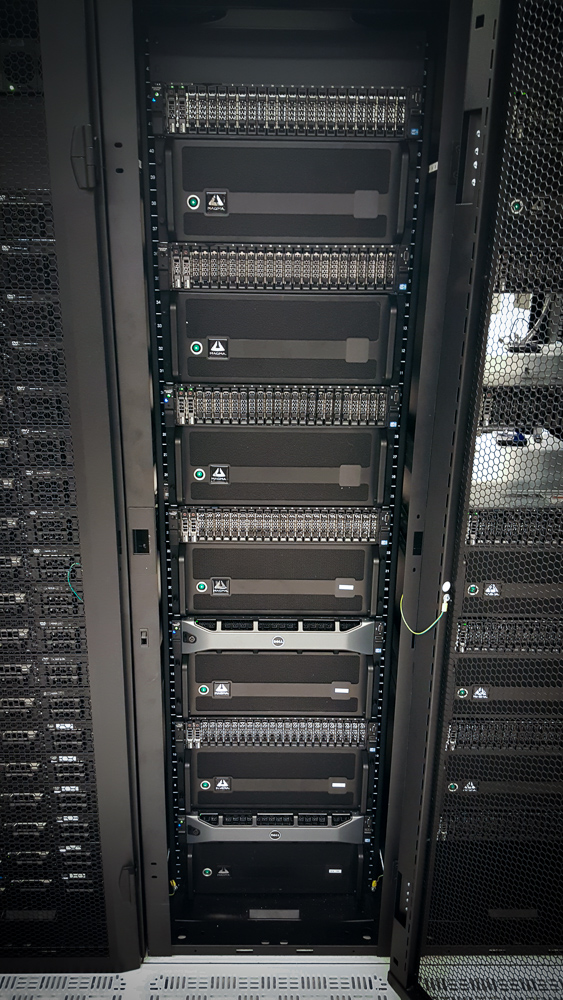Syracuse University faculty and staff are working from home to an unprecedented degree, but computers across campus are still on the clock. Through the Orange Grid distributed computing system and the Crush research cloud, University computers are contributing to COVID-19 research through such collaborative efforts as the Open Science Grid (OSG), Folding@Home and Rosetta@Home.
“We have turned any spare cycles in the research farms to working on protein folding for COVID-19,” said Chief Technology Officer Eric Sedore. “We are ramping up as much as we can without impacting campus research.”
 Programs like the OSG, Folding@Home and Rosetta@Home leverage spare computing cycles at member institutions with the goal of finding cures to diseases, including urgent efforts to address the novel coronavirus. We spoke with Sedore to learn more about Syracuse University’s contributions to these consortiums.
Programs like the OSG, Folding@Home and Rosetta@Home leverage spare computing cycles at member institutions with the goal of finding cures to diseases, including urgent efforts to address the novel coronavirus. We spoke with Sedore to learn more about Syracuse University’s contributions to these consortiums.
OK, so on a basic level: What is a “spare cycle”?
A spare cycle is short-term idle time when a processor is between University-specific workloads. This tends to be a few hours at a time.
How many cores do we have in the research farm?
There are over 25,000 physical cores in the farm, which translates to 50,000 logical cores. Currently, the University is contributing at least 3,000 logical cores to Folding@Home and Rosetta@Home, though this is dynamic. Depending on University research compute load, our contributions can be as high as 10,000 cores between the two projects for short periods of time.
How did you hear about this opportunity? Why are we well suited to help out?
We already contributed small amounts of compute time to this project as part of our public science contribution. We are well suited because both Rosetta@Home and Folding@Home are based on distributed high throughput computing, an approach we use broadly here at the University.
What computers are helping with this specifically? Is someone’s office desktop chipping in while they’re working from home?
We are contributing both through Crush servers at the University’s data centers and through desktops on the OrangeGrid system.
What does our contribution of compute time mean?
Our contribution is intended to advance science, primarily “time to science,” with the hope of shortening the time to completing the molecular modeling for COVID-19. This will help with developing vaccines and antiviral drugs.
To learn more about research computing at Syracuse University, visit researchcomputing.syr.edu.
